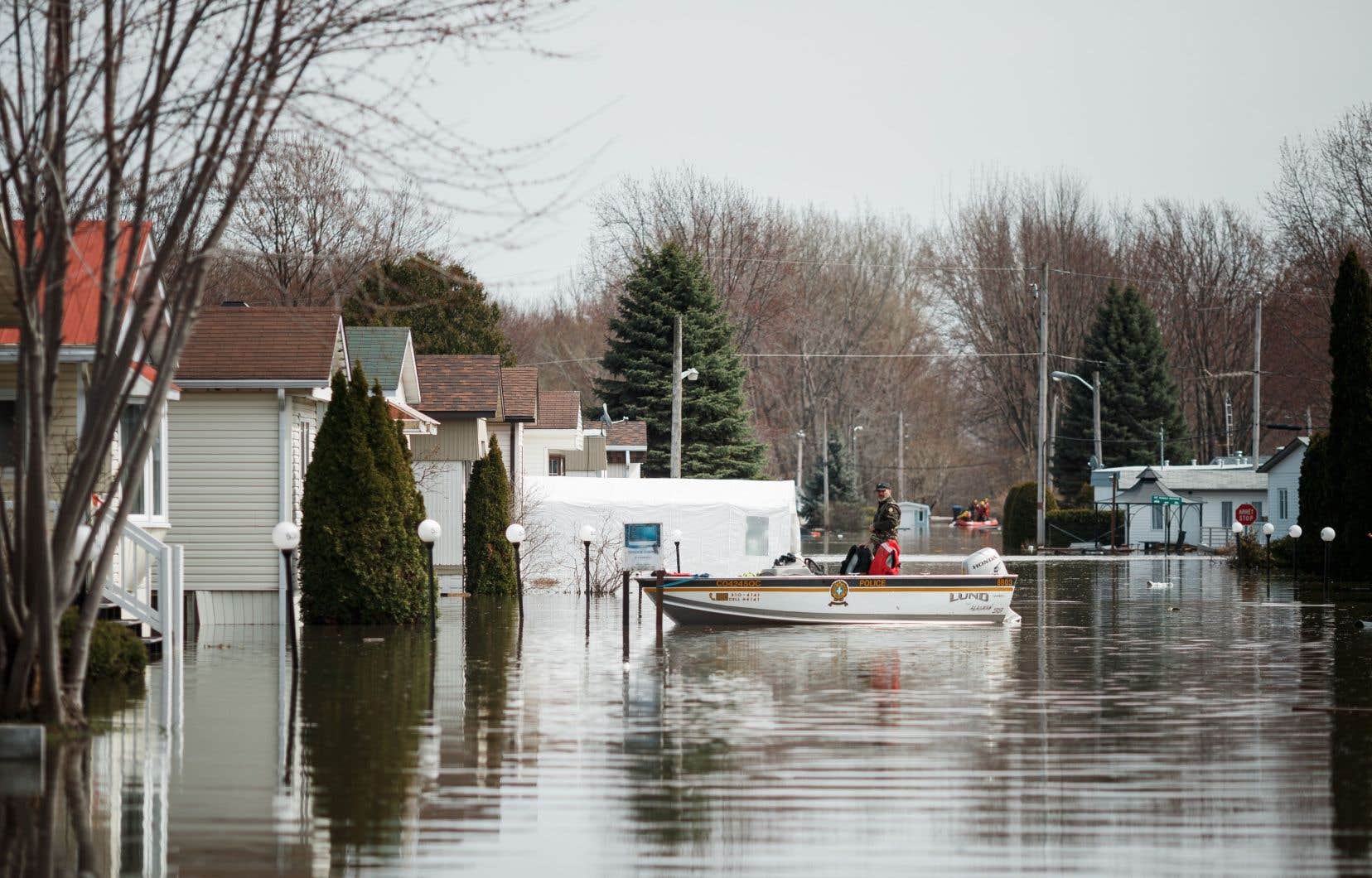Living in a flood zone causes more and more problems for residents.
For example: Desjardins Group recently decided to stop financing the purchase of houses located in flood zones, with a few exceptions.
Philippe Gachon, the general director of the Réseau Inondations InterSectoriel du Québec, believes that Desjardins’ decision is only the tip of the iceberg. Municipalities will face many challenges as provincial authorities will soon publish new mapping of flood zones.
“There are people who will discover that they live in a risk area. They might not have known it before,” he says.
If the new card allows municipalities to obtain more information about their situation, it risks playing a bad trick on residents by determining those who will be able to obtain insurance.
“It will be impossible to get insurance in certain sectors, insurance will be too expensive for a majority of people,” underlines Mr. Gachon, professor of hydroclimatology at UQAM.
Capped government insurance
In an email, Desjardins cited numerous factors to justify its decision: the lack of flood insurance, the cap imposed by the government on compensation for victims, the increasing cost of damage caused by floods.
“It should be noted that properties located in a major flood zone (0-20 year zone) are usually not insurable, while government insurance protects a property for a maximum of $400,000 for life,” mentions a door -desjardins spokesperson, Chantal Corbeil, in an email.
Since 2019, the government has signaled its reluctance to compensate victims for damage suffered by property year after year. He imposed a new cap on compensation and offers financial incentives to convince people to no longer live in a flood zone.
According to the Insurance Bureau of Canada, the floods of 2017 and 2019 cost insurance companies $57.9 million and $279.7 million, respectively. They also cost the Quebec government nearly 390 million in uninsured losses.
In Quebec, 340,000 properties, or approximately 20% of the population, are exposed to flooding.
“I would do like them”
The president of the Federation of Municipalities of Quebec, Jacques Demers, recalls that Desjardins was one of the last mortgage lenders to finance the purchase of houses in a flood zone. The majority of them refuse to lend hundreds of thousands of dollars for a property whose value would drop to zero after a flood.
“I would do like them if I were in their place,” he agrees.
Since the floods of 2017 and 2019, the majority of municipalities no longer allow the construction of new buildings in a high-risk area. Mr. Demers emphasizes that certain cities have adopted various strategies. Some seek to protect infrastructure, others put pressure on residents to move away from a watercourse.
For example, in Beauceville, in the Chaudière-Appalaches region, the authorities decided to redevelop certain collective infrastructure following the catastrophic flood of 2019. No less than a hundred buildings had been demolished.
Serge Vallée, the general manager of Beauceville, says that the city rarely escapes flooding. It has always been rebuilt near the Chaudière River due to the configuration of the surrounding land. But after 2019, it became clear that the city no longer had a choice. Mr. Vallée mentions that city hall has been flooded four times and threatened by landslides.
The heart of the city center will be relocated, he adds.
But redeveloping a city is no easy task. The operation required numerous studies and financial assistance from other levels of government. Work has been delayed by COVID-19, rising interest rates and increased construction costs.
However, Mr. Vallée remains optimistic.
“We recognize the disappointment following 2019 and the loss of heritage buildings, but today participation in public consultations is high. People are ready for renewal. »
